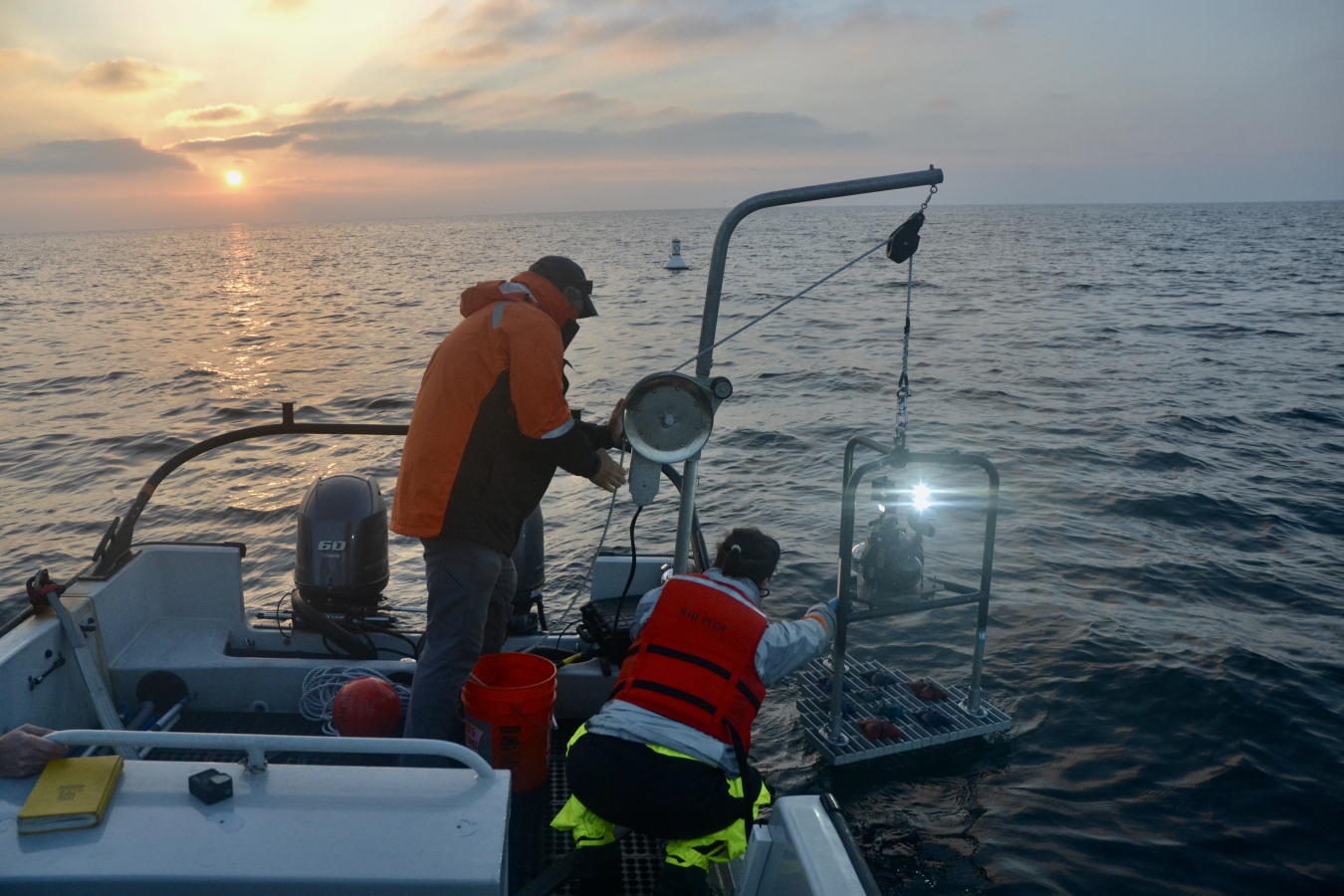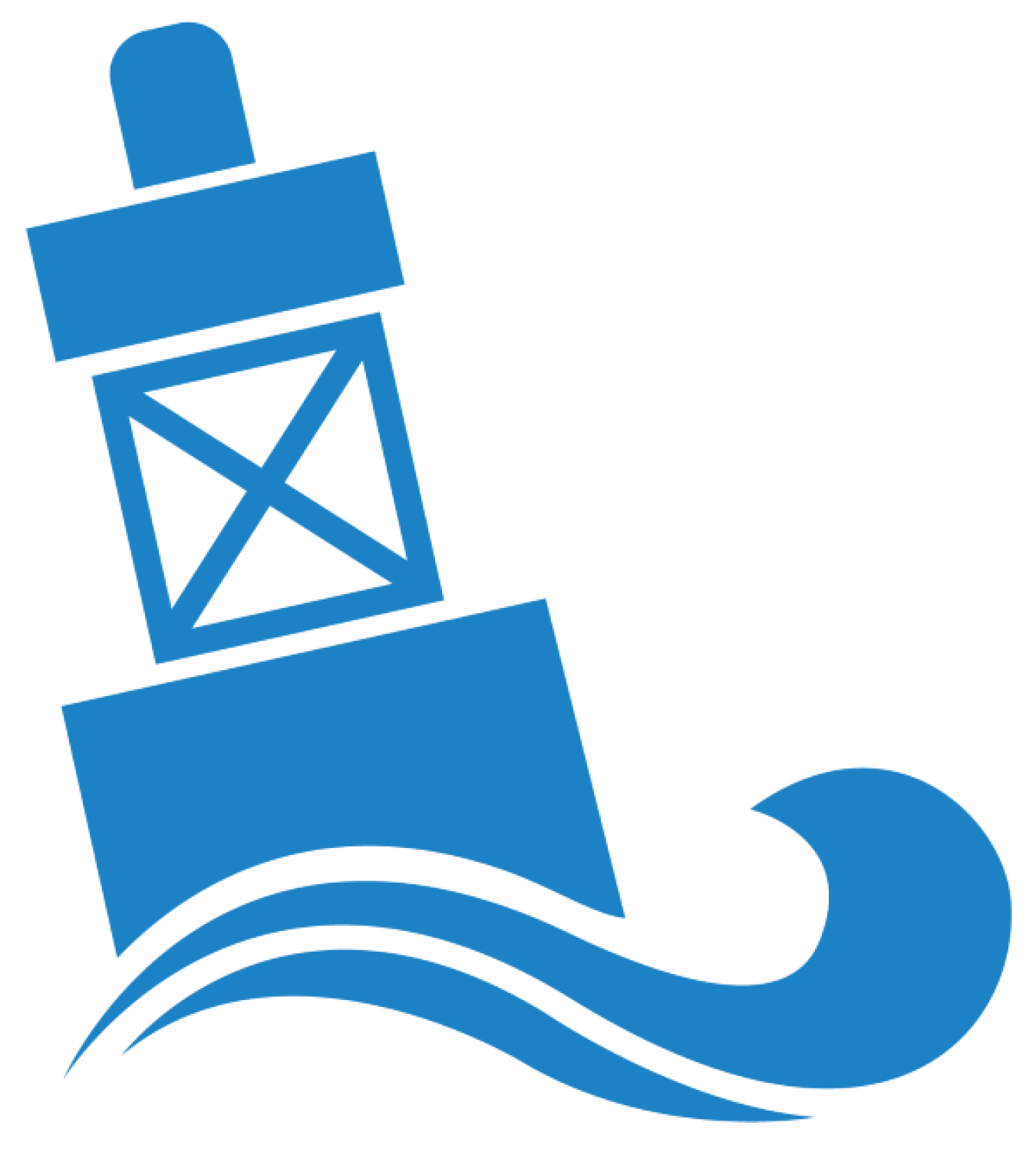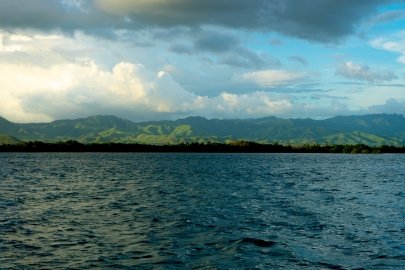The Triton Initiative Field Trials team completed and published the first large-scale environmental monitoring methodology recommendations for the marine energy industry produced from field tests in the United States.
Water Power Technologies Office
March 1, 2023Marine Energy Program
Reducing Barriers to Testing
Project Name: The Triton Initiative: Triton Field Trials (TFiT)
Project Team: Pacific Northwest National Laboratories (lead), CalWave Power Technologies, Pacific Marine Energy Center, Scripps Institution of Oceanography, Solid State Lighting Systems, University of Alaska Fairbanks, University of New Hampshire, and University of Washington
Lead Recipient Location: Sequim, Washington

The Triton Initiative Field Trials (TFiT) team completed and published the first large-scale environmental monitoring methodology recommendations for the marine energy industry produced from field tests in the United States. The results, which were published in a special issue of the Journal of Marine Science and Engineering, explored environmental stressors associated with marine energy devices and effective methods to monitor them with commercially available technologies.
In practice, these results could be used to help speed regulatory and permitting decisions, supporting developers’ efforts to deploy marine energy devices. The TFiT team’s work will help developers understand the environmental effects of devices going into the water and characterize related stressors.

As of October 2022, the 10-paper special issue had received nearly 11,000 views and was cited 18 times. According to Altmetric, a data company that measures how scholarly articles and academic publications are discussed and referenced, the TFiT team’s papers were among the top 25% of most referenced research in academic publications since the team published them. Two papers published by the TFiT team are in the top 5% of most referenced research since publication.
The Pacific Northwest National Laboratory-led Triton Initiative also launched the Triton Talks webinar series to further disseminate TFiT’s results and recommendations. The TFiT team discussed its field work, expertise, methods, results, and recommendations directly with key marine energy stakeholders. Topics included underwater noise, electromagnetic fields, collision risk, and habitat change, among others.
The University of Washington, University of New Hampshire, University of Alaska Fairbanks, Pacific Marine Energy Center, and Scripps Institution of Oceanography supported the journal articles and field tests. CalWave Power Technologies worked with the team to collect underwater sound measurements around a wave energy converter it deployed near San Diego, and Solid State Lighting Systems led the writing of a paper that focused on ecological lighting around marine energy devices.
WPTO's Marine Energy e-newsletter shares news and updates on tools, analysis, and emerging technologies to advance marine energy.
The WPTO e-newsletter brings funding opportunities, events, publications, hydropower, and marine energy updates directly to your inbox.







